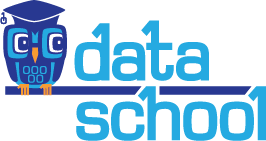What is "AI" versus "Machine Learning"? 🤔
Last week, I announced my forthcoming book, Master Machine Learning with scikit-learn.
In response, my Dad asked me:
How does the subject of this book relate to Artificial Intelligence?
In other words: What's the difference between AI and Machine Learning?
Ponder that question for a minute, then keep reading to find out how I answered my Dad... 👇
AI vs Machine Learning
Here's what I told my Dad:
You can think of AI as a field dedicated to creating intelligent systems, and Machine Learning is the dominant approach (but not the only approach) for achieving that intelligence.
Let's break that down further...
The goal of AI is to create systems that behave intelligently, meaning they simulate (and sometimes surpass) human intelligence. You can think of AI as both a field of study and a goal to achieve.
Examples of AI are all around us:
- Voice assistants (Alexa, Siri)
- Recommendation systems (YouTube, Netflix)
- Chatbots (ChatGPT, Claude)
- Code generators (Cursor, Copilot)
- Facial recognition (any Photos app)
- Self-driving cars (Waymo, Telsa)
- Robotics (home vacuums, warehouse robots)
- Spam detection (Gmail, blog comments)
- Writing assistants (Smart Reply, autocorrect)
- Route optimization (Google Maps, DoorDash)
- User matching (Facebook, Tinder)
- Social media feeds (Instagram, TikTok)
- Healthcare (drug discovery, diagnostic image analysis)
- Finance (algorithmic trading, credit scoring)
Machine Learning, on the other hand, is an approach for achieving AI. Specifically, Machine Learning focuses on algorithms that can automatically learn patterns from data in order to make decisions in new situations that they were not explicitly programmed to handle.
Here are some examples of Machine Learning to make this concept more concrete:
- Netflix learns that many users who like movies A and B also like movie C, so they recommend movie C to other users who like A and B but haven't seen C.
- Gmail learns that messages with certain phrases are marked by users as spam, so they are more likely to mark future messages containing those phrases as spam.
- Apple Photos learns that faces with certain features are tagged as your child, so they tag faces with similar features in other photos as your child.
While Machine Learning is the dominant approach for achieving AI, it is not the only approach. Here are a few other approaches:
- Rule-based systems: TurboTax uses a sophisticated "if-then" flowchart (programmed by humans and based on tax laws) to accurately fill out your tax return.
- Search algorithms: A traditional chess engine examines millions of possible future board states in order to decide which move to make next.
- Constraint satisfaction: A Sudoku solver determines which number placements satisfy all the rules of the game.
- Genetic algorithms: These are algorithms that mimic the process of evolution to solve an optimization problem. For example, they can search for the optimal engineering design for a bridge by creating a "population" of random designs, selecting the "fittest", "mating" the winners, adding "mutations", and simulating this process for many "generations" until a suitable solution is discovered.
Finally, it's worth noting that modern AI systems often combine Machine Learning and non-Machine Learning approaches. For example, a self-driving car might use Machine Learning to recognize a stop sign but a rule-based system to decide how to react to that stop sign.
Summary
After writing this post, here's my best one-sentence summary of AI vs Machine Learning:
AI is a field that creates intelligent systems, and Machine Learning is the dominant approach for achieving that intelligence by learning patterns from data.
How did I do? Is there a different way you would explain this to your parent (or boss)? Comment and let me know!
